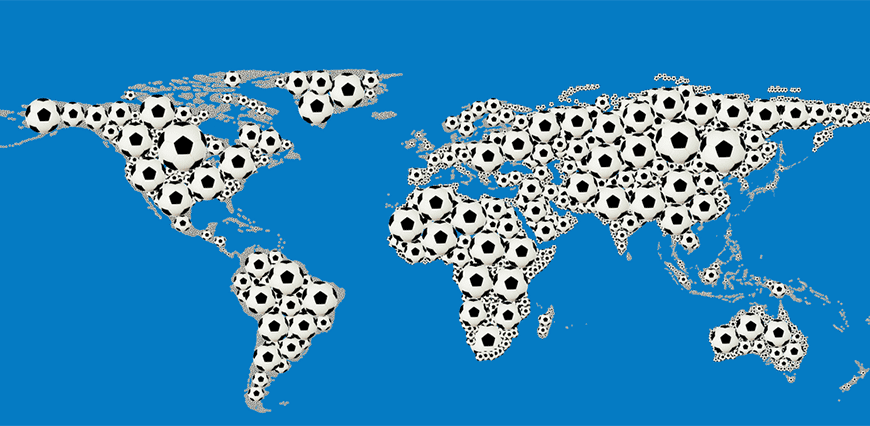
Digital media has changed the modern sports experience for fans around the world. Millions of people actively share photos, videos, and other forms of content on social, the new platform for sports fan engagement.
In no other sport is the shift to digital media more pronounced than in soccer (or football if you will). Statistics compiled by the European Sponsorship Association demonstrate that the hottest topic during the English Premier League opening weekend in August reached over 62 million fans on social media. What’s even more interesting is that approximately 75% of the engagement occurred outside the UK.
Download this post by entering your email below
The Power of Social is Alive and Strong Indeed
Social chatter in the soccer world also made remarkable gains closer to home. The opening round of North America’s 2015 Major League Soccer occurred on March 6th, which saw reigning champions the LA Galaxy face off with the Chicago Fire.
As the teams clashed during the first week on the pitch, social analytics firm General Sentiment compiled a report detailing the social footprint of major professional sports leagues in North America. According to the numbers, social conversations over the first five days of the MLS season increased by 34% compared to the same timeframe in 2014.
Perhaps the most impressive fact about the MLS social footprint is how the growth stands head and shoulders above the “Big Four” North American sports leagues. Conversations over the first five days of the 2014 NFL season were consistent with chatter over the same period during the previous season. Things were much quieter on the social front in the MLB and the NBA as year over year engagement declined in both leagues. Only the NHL reported a 7% increase in chatter, a significantly lower rate than the MLS.
Shoot to Score In a New Market
Soccer is often referred to as “The World’s Game” in many corners of the globe due to the sheer volume of fans worldwide. The sport established grassroots in many areas of the globe but was slow to rise in North America, outside of Mexico. Over the years, North American fans became fascinated by the sport as many of the world’s most popular clubs marketed their teams across the US and Canada through offseason tours.
Among the most popular clubs to tour North America is Manchester United, one of the oldest and renowned soccer teams in the UK. The team was one of the first European clubs to schedule global preseason tours, which included friendlies against MLS clubs on recent trips. This marketing strategy allowed Man U to tap into an unrealized soccer market by tweeting photos of the team on tour that were redistributed by fans, including by followers in the US.
The MLS agreed to United’s preseason tour, recognizing the potential for North American soccer. The tours were a big hit and the MLS later agreed to schedule preseason matches with other Premier League clubs such as Manchester City, Chelsea, and Tottenham.
Influence of the World Cups
General Sentiment hinted that the MLS has the 2014 FIFA World Cup to thank in part for the surging popularity of domestic soccer. The same report showed MLS social conversations in 2015 were up over 64% from social chatter in 2013, one year before the World Cup was played in Brazil.
The 2014 World Cup was one of the largest tournaments of our time, with fans splitting their time tuning into games on TV, the internet, or via their smartphones. In fact, nearly half of surveyed soccer fans in 11 countries said they watched at least some of the World Cup on mobile.
One day after the World Cup Final between Germany and Argentina, Facebook created an infographic that revealed 350 million people interacted with 3 billion pieces of soccer content throughout the tournament.
350 Million People Interacted with 3 Billion Pieces of Soccer Content Throughout the Tournament
A similar but muted buzz followed the 2015 Women’s World Cup in Canada this summer. Influenster surveyed 10,000 US women during the 2015 WWC, and 61% of respondents chose social media as their favourite source for updates. As with the men’s tournament in 2014, Facebook was the preferred platform.
The World Cups are arguably the biggest sporting events in the world, rivaling the anticipation and audience of the Olympics. The rise of social media allows fans to post content that promotes the game, allowing friends and supporters to like, comment, or reshare the content to reach other followers. Social media has added a new platform to ‘The World’s Game’ and elevated the sport into a phenomenon that stretches across the globe.
The Power of Social Sports Marketing
The MLS, the Premier League, and the various World Cups all recognized the power of social media by using the platform for the common goal of acquiring new fans. Their actions built a love for soccer in new markets like North America where the game is beginning to rival other professional leagues in popularity.
Encouraging fans to get involved in the sport is the first step, but some organizations are engaging with their fans using content to go deep into the game. For example, The Football League in England uses Rock Content to emphasize storytelling in soccer. The response has been very positive, and the league intends to share the software solution among all clubs within the league.
Brands large and small can impart many of the strategies used by pro soccer organizations to achieve their own ambitious goals. Tips and plans of action contained within sports marketing guides can be tweaked and optimized within many different industries to achieve common goals of increased awareness, larger social networks, or interactive customers.







